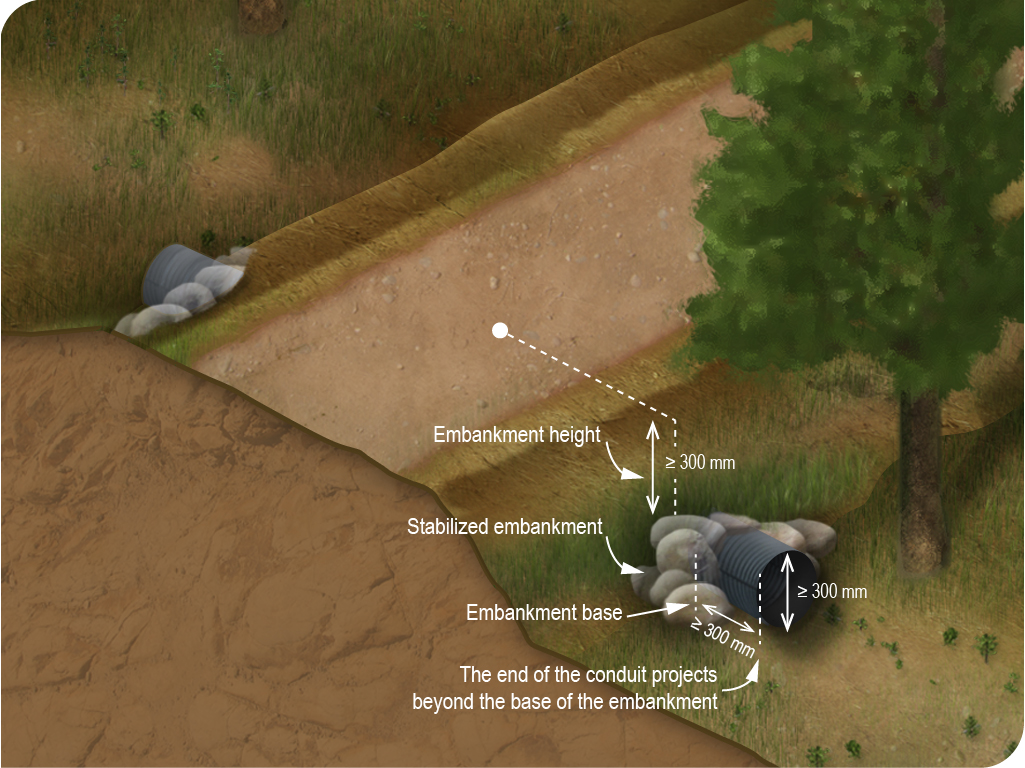Chapter V – Roads, sandpits and forest infrastructures
Division II – Roads
§4. Stabilization of excavated soils and road embankments and diversion of runoff
Section 79
The diameter of a drainage channel used to divert water from one side of a road to the other must be sufficient to prevent the obstruction of the channel and maintain at all times the free flow of the water. The diameter of the channel may not be less than 300 mm. 
1
Objectives
- To ensure the lifespan of a road, bridge or culvert
- To preserve the natural drainage of the soil
- To reduce loss of productive forest areas
Additional information
It is often the case that a drainage channel with a diameter of more than 300 mm (e.g. 450 mm) is needed to maintain the free flow of water at all times.
Figure 79 Characteristics of drainage channel installation
The fill covering a drainage channel must be greater than 300 mm. 
2
Objective
- To ensure the lifespan of a road, bridge or culvert
Figure 79 Characteristics of drainage channel installation
The end of the drainage channel must extend at least 300 mm beyond the base of the fill supporting the road and the fill in that location must be stabilized at the time of installation. 
3
Objectives
- To ensure the lifespan of a road, bridge or culvert
- To preserve the natural drainage of the soil
Figure 79 Characteristics of drainage channel installation

